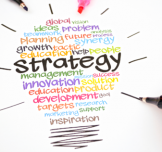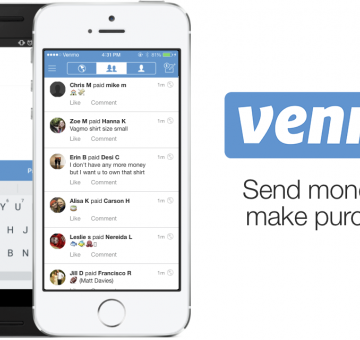McKinsey Technology Trends Outlook 2022

Which technology trends matter most for companies in 2022? New analysis by the McKinsey Technology Council highlights the development, possible uses, and industry effects of advanced technologies.
McKinsey has worked with the external and internal experts on the McKinsey Technology Council to identify and interpret 14 of the most significant technology trends unfolding today.
McKinsey’s analysis examines tangible factors as investment, research activity, and news coverage to gauge the momentum of each trend. They also conducted dozens of interviews and performed hundreds of hours of research to learn which industries are apt to benefit most as they absorb these technologies.
Below, McKinsey lay out these considerations for all 14 technology trends, so that you can better understand them and consider how they relate to your organization.
-
Applied AI
Total Investments in 2021: $165 billion
Models trained in machine learning can be used to solve classification, prediction, and control problems to automate activities, add or augment capabilities and offerings, and make better decisions.
This trend can be applied in these industries: Aerospace and defense, Agriculture, Automotive and assembly, Aviation, travel, and logistics, Chemicals, Construction and building materials, Consumer packaged goods, Education, Electric power, natural gas, and utilities, Information technology and electronics, Media and entertainment, Metals and mining, Oil and gas, Pharmaceuticals and medical products, Public and social sectors, Real estate, Retail, and Telecommunications
Learn more about this trend: Here.
-
Advanced connectivity
Total Investments in 2021: $166 billion
5G/6G cellular, wireless low-power networks, low-Earth-orbit satellites, and other technologies support a host of digital solutions that can drive growth and productivity across industries.
This trend can be applied in these industries: Aerospace and defense, Automotive and assembly, Aviation, travel, and logistics, Construction and building materials, Electric power, natural gas, and utilities, Healthcare systems and services, Information technology and electronics, Media and entertainment, Metals and mining, Oil and gas, Retail, and Telecommunications.
Learn more about this trend: Here.
-
Future of bioengineering
Total Investments in 2021: $72 billion
Converging biological and information technologies improve health and human performance, transform food value chains, and create innovative products and services.
This trend can be applied in these industries: Agriculture, Chemicals, Healthcare systems and services, Pharmaceuticals and medical products.
Learn more about this trend: Here.
-
Future of clean energy
Total Investments in 2021: $257 billion
Clean-energy solutions help drive toward net-zero greenhouse-gas emissions across the energy value chain, from power generation to power storage and distribution.
This trend can be applied in these industries: Chemicals, Construction and building materials, Electric power, natural gas, and utilities, Metals and mining, Oil and gas, Public and social sectors
Learn more about this trend: Here.
-
Future of mobility
Total Investments in 2021: $236 billion
Mobility technologies aim to improve the efficiency and sustainability of land and air transportation of people and goods.
This trend can be applied in these industries: Automotive and assembly, Aviation, travel, and logistics, Electric power, natural gas, and utilities, Financial services, Oil and gas, Public and social sectors, and Retail.
Learn more about this trend: Here.
-
Future of sustainable consumption
Total Investments in 2021: $109 billion
Sustainable consumption involves transforming industrial and individual consumption through technology to address environmental risks, including climate change.
This trend can be applied in these industries: Aerospace and defense, Agriculture, Automotive and assembly, Aviation, travel, and logistics, Chemicals, Construction and building materials, Consumer packaged goods, Electric power, natural gas, and utilities, Information technology and electronics, Metals and mining, Oil and gas, Pharmaceuticals and medical products, Public and social sectors, Real estate, Retail, and Telecommunications.
Learn more about this trend: Here.
-
Web3
Total Investments in 2021: $110 billion
Web3 includes platforms and applications that enable shifts toward a future, decentralized internet with open standards and protocols while protecting digital-ownership rights, providing users with greater ownership of their data and catalyzing new business models.
This trend can be applied in these industries: Financial services, Information technology and electronics, Media and entertainment, and Retail.
Learn more about this trend: Here.
-
Industrializing machine learning
Total Investments in 2021: $5 billion
Industrialized machine learning (ML) uses software and hardware solutions to accelerate the development and deployment of ML and to support performance monitoring, stability, and ongoing improvement.
This trend can be applied in these industries: Aerospace and defense, Automotive and assembly, Financial services, Information technology and electronics, Media and entertainment, Pharmaceuticals and medical products, and Telecommunications.
Learn more about this trend: Here.
-
Immersive-reality technologies
Total Investments in 2021: $30 billion
Immersive-reality technologies use sensing technologies and spatial computing to help users “see the world differently” through mixed or augmented reality or “see a different world” through virtual reality.
This trend can be applied in these industries: Aerospace and defense, Automotive and assembly, Aviation, travel, and logistics, Construction and building materials, Education, Electric power, natural gas, and utilities, Healthcare systems and services, Information technology and electronics, Media and entertainment, Real estate, and Retail.
Learn more about this trend: Here.
-
Cloud and edge computing
Total Investments in 2021: $136 billion
Cloud and edge computing involves distributing computing workloads across remote data centers and local nodes to improve data sovereignty, autonomy, resource productivity, latency, and security.
This trend can be applied in these industries: Aerospace and defense, Automotive and assembly, Aviation, travel, and logistics, Financial services, Healthcare systems and services, Information technology and electronics, Media and entertainment, Pharmaceuticals and medical products, Retail, and Telecommunications.
Learn more about this trend: Here.
-
Trust architectures and digital identity
Total Investments in 2021: $34 billion
Digital-trust technologies enable organizations to build, scale, and maintain the trust of stakeholders in the use of their data and digital-enabled products and services.
This trend can be applied in these industries: Aerospace and defense, Consumer packaged goods, Education, Financial services, Healthcare systems and services, Information technology and electronics, Media and entertainment, Pharmaceuticals and medical products, Public and social sectors, Retail, and Telecommunications.
Learn more about this trend: Here.
-
Future of space technologies
Total Investments in 2021: $12 billion
Advances and cost reductions across satellites, launchers, and habitation technologies enable innovative space operations and services.
This trend can be applied in these industries: Aerospace and defense, and Telecommunications.
Learn more about this trend: Here.
-
Quantum technologies
Total Investments in 2021: $3 billion
Quantum-based technologies could provide an exponential increase in computational performance for certain problems and transform networks by making them more secure.
This trend can be applied in these industries: Aerospace and defense, Chemicals, Financial services, Information technology and electronics, Metals and mining, Oil and gas, and Pharmaceuticals and medical products.
Learn more about this trend: Here.
-
Next-generation software development
Total Investments in 2021: $2 billion
Next-generation tools aid in the development of software applications, improving processes and software quality; tools include AI-enabled development and testing and low-code or no-code platforms.
This trend can be applied in these industries: Financial services, and Information technology and electronics.
Learn more about this trend: Here.
You can Download the full Report: Here.
Article Source: https://www.mckinsey.com






































































EgyptInnovate site is not responsible for the content of the comments